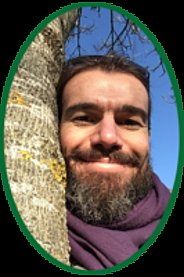Cyrille Rathgeber ¶

Université de Lorraine, AgroParisTech, INRAE, SILVA, F-54000 Nancy, France
Fellowship Period: 2021-2022
Since 2005, I have been working at INRAE in Nancy on the influence of environmental factors on tree growth in the context of global changes. I have been particularly interested in the influence of climate on the dynamics of wood formation and tree-ring structure. To this end, I set up instrumented sites, developed innovative data processing methods and built an international database. More recently, I have started working on detecting treeline upward shift, attributing possible causes, and forecasting future consequences in terms of carbon sequestration and biodiversity conservation.
Activities within WSL Fellowship ¶
Advances in monitoring wood formation are offering new opportunities to unravel the link between causes and consequences in the complex world of climate-growth relationships, and to build a novel mechanistic framework for radial growth at detailed spatio-temporal resolutions. For the first time ever, this approach allows to accurately and precisely assign to nearly every single cell of the forming tree-ring: (1) a “biometric passport” (cell morphology); (2) an “isotopic signature” (isotope ratios); and (3) a “kinetic time-stamp” (kinetics parameters of tracheid differentiation). This constitutes a giant step forward towards the mechanistic understanding of the relationships between tree-ring structure and composition, and co-occurring physiological and environmental factors. In connecting causes (physiological states and climatic factors) and consequences (tree-ring structure and composition), we will further advance the understanding of the processes through which climatic variations impact tree growth, forest productivity, and the carbon cycle. This temporally improved connection between climate conditions, intra-annual dynamics of wood formation, and wood structure and function in trees, will both advance the interpretation and reliability of tree-ring proxies, and also improve projections of future climate change impacts of tree growth, forest ecosystem functioning, and flux exchanges between terrestrial ecosystems and the atmosphere.
Cooperation within WSL ¶
Interne Kontakte (Datensätze) ¶
Cooperation outside of WSL ¶
Nicolas Delpierre (Laboratoire Ecologie, Systématique et Evolution, Equipe Ecophysiologie végétale, Université Paris-Saclay, Gif-sur-Yvette, France)
Laurent Bergès (LESSEM, INRAE Grenoble, Grenoble, France)
Matteo Campioli (Department of Biology, University of Antwerp, Belgium)
